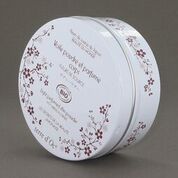Procurement managers need to send requests to their suppliers to provide information about their goods or services. The information received from suppliers must be translated into formal contractual terms before contracting can occur. The following explains the three types of information requests as well as the different situations for what and when to request.
Request For Information Types
- Request For Information (RFI)
- Request For Proposal (RFP)
- Request For Quote (RFQ)
Request For Information
An RFI represents the buyer's interest in market intelligence concerning alternatives and possibilities. This is the request in which the buyer usually asks suppliers about the types of good and services they are able to provide and what makes them different from competitors. Here are RFI examples for cosmetic packaging:
- facilities and finances
- supply market logistics and dynamics
- alternative pricing strategies
- product descriptions and functions
- trends affecting suppliers and competitors
This request does not include any statement of intention of signing a contract. At the same time, buyers must remember that suppliers usually only respond to a time consuming RFI if they expect the process to continue toward an RFP or RFQ.
Typically the RFI stage is a signal to the supplier that the buyer thinks they know what they want, but needs to collect deeper information without making a formal commitment. It usually does lead to the RFP and RFQ stages, since the buyer has already narrowed down choices of vendors after conducting thorough evaluations.
Request For Proposal
 Once the buyer develops an understanding of the marketplace and creates a statement of work that includes performance needs, they issue an RFP. This request may address requirements regarding strength, flexibility and fire resistance without emphasizing what materials are made of. This request sometimes deals with non-standard or highly complex items that may call for supplier advice.
Once the buyer develops an understanding of the marketplace and creates a statement of work that includes performance needs, they issue an RFP. This request may address requirements regarding strength, flexibility and fire resistance without emphasizing what materials are made of. This request sometimes deals with non-standard or highly complex items that may call for supplier advice.
The supplier responds with detailed information on how the buyer's needs will be met for specific prices. Then the ball moves back into the buyer's court, leading to requirement revisions followed by negotiations of exact terms. The RFP stage reflects a more definite interest from the buyer, who merely needs more concrete information on pricing and vendor reliability.
Here are examples of details used in proposals:
- performance metrics
- instructions for how to respond
- due dates
- technical and training considerations
- who to contact for further questions
Request For Quote
The final stage of the process leading up to the contact is RFQ, which the buyer issues when they are ready to discuss a statement of work that comprises the exact specifications of the necessary goods or services to be purchased. The request, which follows bid evaluations, may accompany competitive tendering and doesn't usually involve detailed negotiations.
RFQs work well for the procurement of standard or well known items in the industry, due to upfront specification requirements. The buyer then compiles the supplier's responses and puts the information into contractual form and presents a formal quote request. It may only be sent to one supplier or it could involve multiple suppliers in a competitive tendering arrangement.
Ultimately, the final stage is contract negotiation between the buyer and the supplier. The contract spells out the details of the buyer's responsibilities, such as payment terms or how the agreement is executed. Some contracts have multiple payment and non-payment arrangements. Here are examples of items in quote requests:
- quantities and volumes
- delivery requirements
- personnel skills and competency levels
Contract terms are commonly negotiated between the buyer and seller. Fixed-price contracts specify what the buyer will pay regardless execution costs. In this scenario a fixed percentage may be added to what the buyer pays, based on supplier costs for cosmetic packaging materials.
Conclusion
The process that leads up to bids and quotes between buyers and suppliers involves sharing information about cosmetic packaging specifications. This process begins with an RFI. After a supplier receives an RFP or RFQ they submit bids that help shape the price of the goods and services.
Disclaimer: The postings in this blog section do not necessarily represent Desjardin's positions, strategies or opinions.
References and Further Reading
- More posts on Cosmetic Packaging, by Alex Cosper and Dawn M. Turner
- Is It a Cosmetic, a Drug, or Both? (2016), by the U.S. Food and Drug Administration
- Regulation (EC) No 1223/2009 on Cosmetic Products (2009), The European Parliament the the European Council
- ISO 22715:2006: Cosmetics -- Packaging and labelling (2006), International Organization for Standardization







